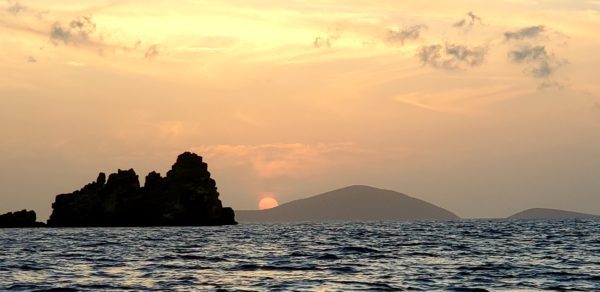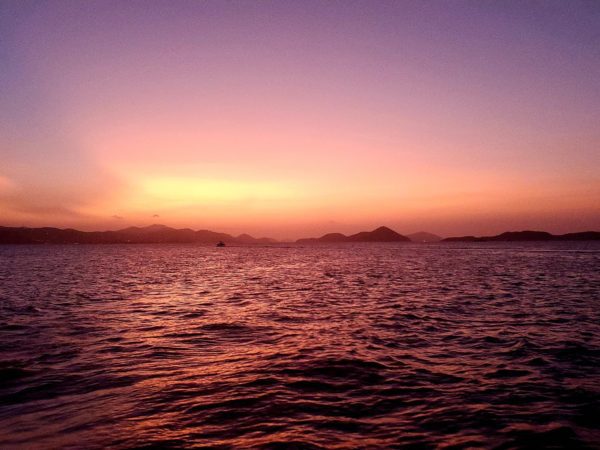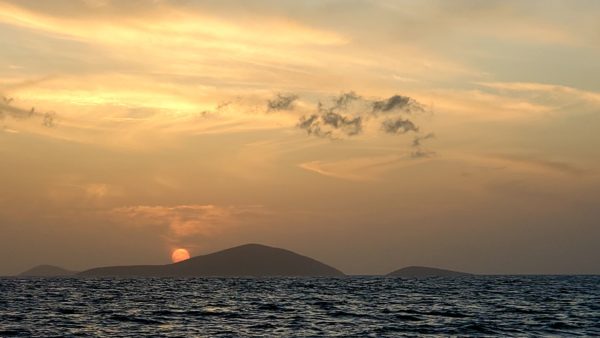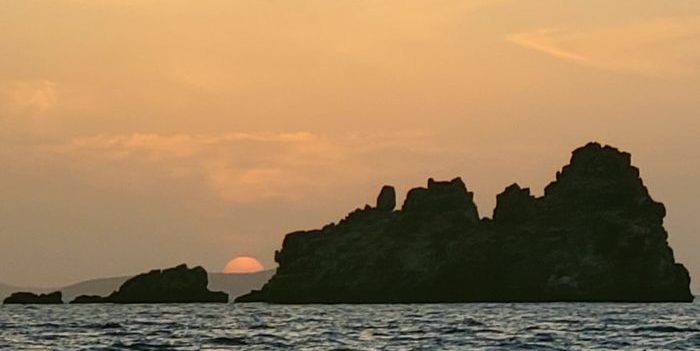Good Morning! If you’re on island right now, you may have noticed the brackish haze on the horizon, as well as some pretty unworldly sunsets, over the past week. To the naked eye, it seems that the air quality is just a bit poor, dulling the vibrant greens and blues we are accustomed to here in the VI. Well, it IS poor air quality, to be fair. But its also a crazy natural phenomenon that has always blown my mind, ever since I moved to St. John.
Each year, at about this time, the air starts to warm and the breeze begins to settle in anticipation of the dig days of summer. And in this season of mid-Spring, we start to se a haze that consistently battles with the blues in the sky, the movement of air and, at its worst, allergies and respiratory systems. The haze that you see in the air is known as the Sahara Dust Layer (SAL) that is made up of tiny little particles of dust that are carried over on the trade winds from…you guessed it…The Sahara Desert in AFRICA. Crazy right?

We experience this phenomenon sporadically throughout the year, but it is most consistent in showing its hazy face from late Spring to early Fall.

The bonus to the dust is that it makes the air super heavy and helps to prevent the formation of major storms…With the start of hurricane season just six weeks away, it’s almost a sigh of relief to see the haze settling in.
The dusty layers are often propelled by fast-moving winds, which is why they can cross the ocean in just a few days. A storm growing into a towering whirlwind can get its top knocked off by those winds, preventing it from getting bigger.- National Geographic, June 2020
And the sunsets…Well, they literally look like something not of this world.

Additionally, according to National Geographic, the dust is an added bonus for the eco-systems it penetrates. Ours being nearly 5000 miles away from its origin.
Each year, these kinds of plumes sweep off the Sahara (Desert), carrying some 180 million tons of mineral-rich dust from its dried-out pans. Thousands of miles downwind, the fine-grained dust shapes both the ecology of the places it lands and the climate as a whole. – National Geographic, June 2020
The dust not only helps to fertilize the land that it settles upon, but also helps the sea life! The minerals in the dust are rich in iron and phosphorus which is beneficial to both land and sea flora. So, it helps to nourish our coral and the sea life of the Atlantic Ocean along the way.
Both plants on land and phytoplankton in the sea need those nutrients to grow. As the dust falls from the traveling plume and lands on the sun-soaked surface of the ocean, it fertilizes the photosynthesizing creatures that live there, which are often starved for the elements. More than 70 percent of the iron available to the ocean-bound photosynthesizers in the Atlantic comes from Saharan dust, a 2014 study found. – National Geographic- June 2020
Last year, in June, we saw a particularly heavy batch of Sahara Dust that was leaving dust EVERYWHERE, kept visibility at a minimum and posed a potentially dangerous threat to at risk respiratory systems..Especially due to its timing in the early days of COVID. The plume that we saw last summer was not only much bigger than usual, but also much lower to the surface of the earth.
“Usually, the dust sparkles thousands of feet above Earth’s surface. But this plume (June 2020) is not only much bigger than usual; it’s much lower, too.” – National Geographic, June 2020
But, this week, the phenomenon we are experiencing is much more “normal” by SAL standards. It has definitely made the air heavy and HOT (I’m not quite sure I’m ready for summer yet. Ha!). But it has also made for some incredible light shows as the day turns into night.

I hope you enjoyed the pictures and the information today! If you’re on island and you see that haze in the sky, make sure to pay close attention to the sunsets as the celestial orb tucks itself to sleep each night.

If you are interested in more in depth details about the Saharan Dust, I highly recommend the National Geographic article as referenced above. I found it to be a very informative read!



good afternoon,
Hope all is well
I miss the rock. My wife and i have been coming to STJ for years.
Do you know the beach just to the west of Jumbie?
There is a driveway just past Peace Hill.
Can we go there?
How long is the dust anticipated. We r coming may 9 for a week
Oppenheimer? Yeso